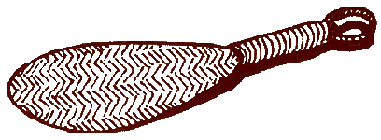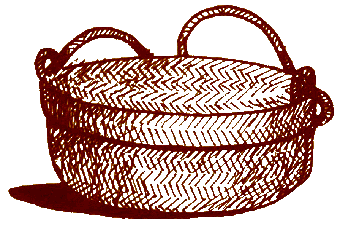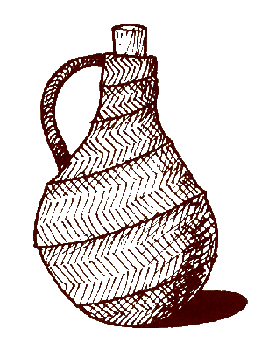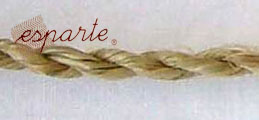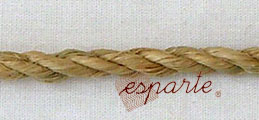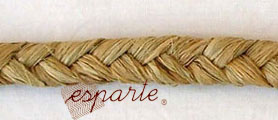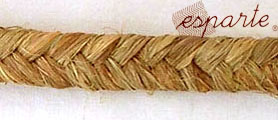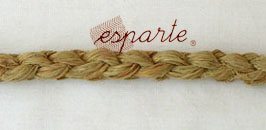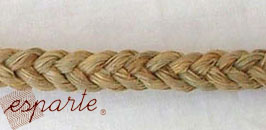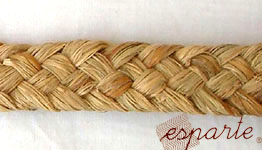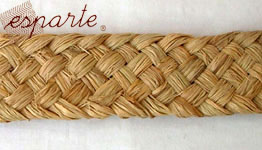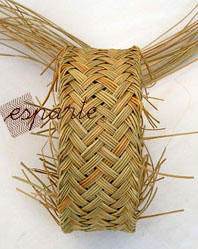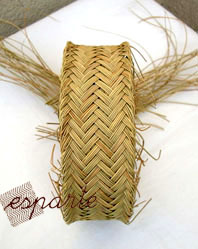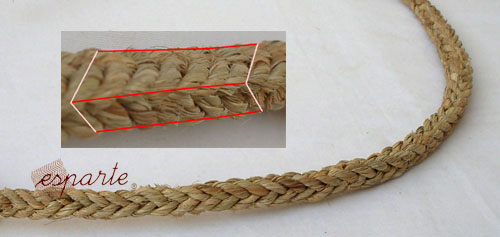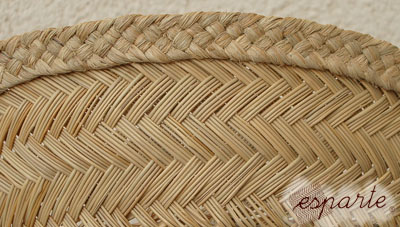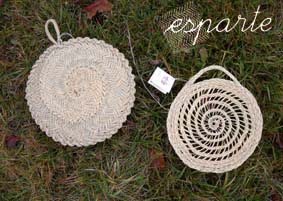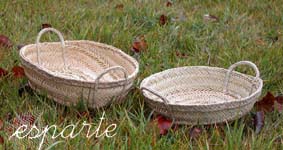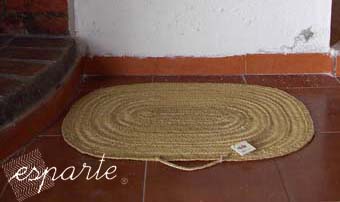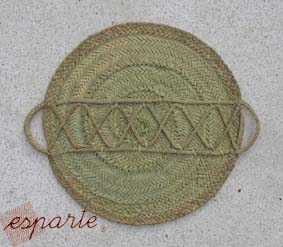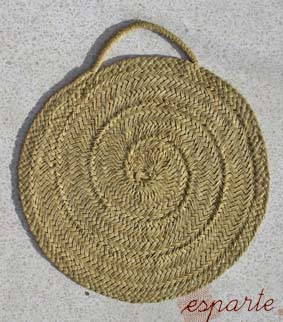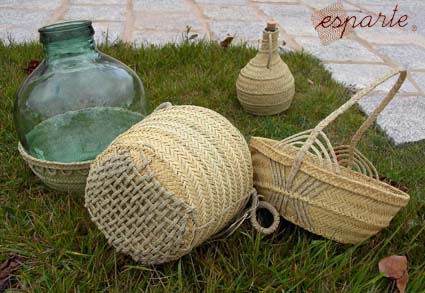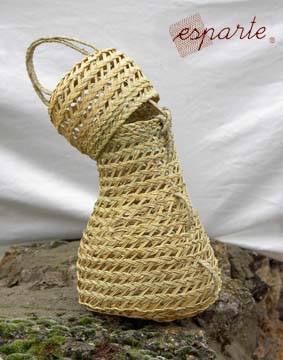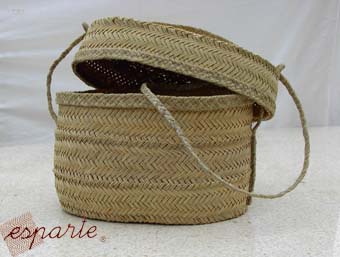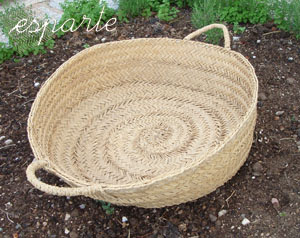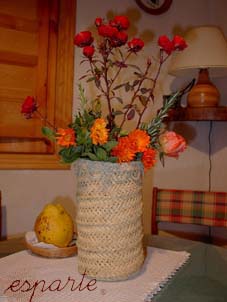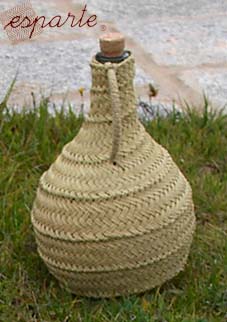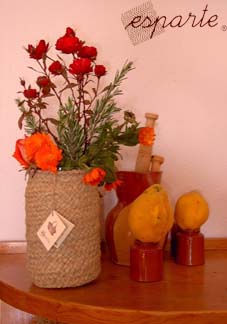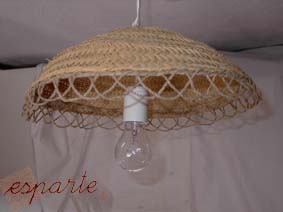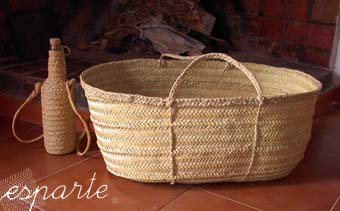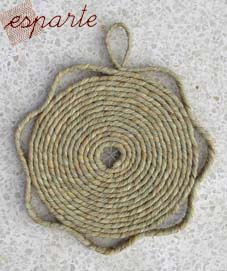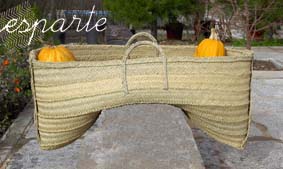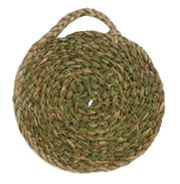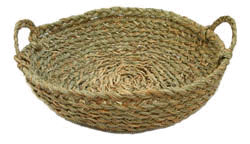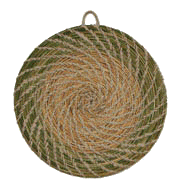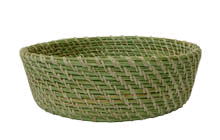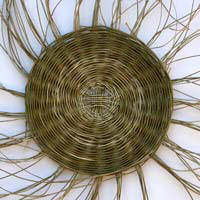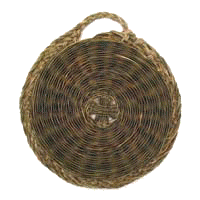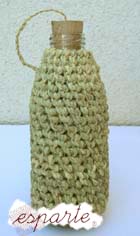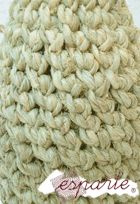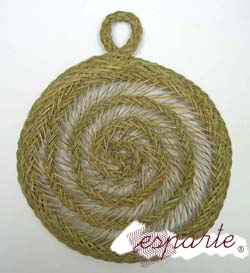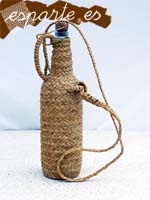
Esparto craftsmanship begins with the summer months. Grass as it is, it is ripe for harvesting in the middle of summer (July and August). If you are facing an "atocha" (common name for the esparto plant), you can catch some leaves (about 20 or 30) and roll them up on a little stick, which you’ll pull energetically up to the direction of the leaves until you extract them from its stem. It is a quick method to pull up the bunches but frecuently it causes a separation in the roots of the plant. Also, the thin ends from leaves will be damaged for the "palillo", "cogeor" or "talisa" (stick). Another method to harvest it, less agressive to the plant would be: harvest a bunch of about 8 or 10 leaves, you hold them tight with the hand and pull them up with strenght. Although it will need more time than the previous manner, it causes less damaged to the leaves.
DRYING AND PREPARATION
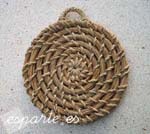
After harvesting a lot of leaves, you can proceed with cleaning and selection at the same place of harvesting , getting rid of dry or damages leaves. The esparto leaves will be joined in small bunches to expose them to the sunshine for 40 days. This is important , because this will give the typical golden colour to the esparto leaves.
TREATMENTS
Once the esparto leaves are prepared, there are two ways to handle them, one way is to work with it like raw esparto and the other like crushed esparto "picao"):
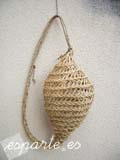
+ Raw esparto.
As it is dry it has to be put in water for 1 or 2 days before working with it and recovers the needed flexibility. It’s suitable to make the pleita (the most important plaiting in esparto craftsmanship), "cordelillo" (worked as it was wicker), cofin work and "cachuleros or cernachos" (esparto bags used to collect snails).
+ Crushed esparto ("picao").
After drying (like raw esparto) it is necessary to put the bunches in water for 40 days to make them stronger. Afterwards, the leaves will be dried and the next step will be to crush the leaves.With a wooden mallet (holm oak generally) it is crushed continuously on a trunk (pine, almond tree or similar) until the numerous fibres that form the leaves get separated. This is the moment that we are able to handle the esparto. (More details in the section of this website "The esparto")
PIECES
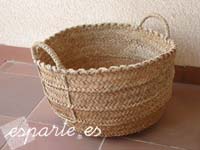
· Raw esparto will be plaited in wide strips, made of as many strands as you wish, but always in an odd number (most usual are between 13 and 19 strands). Each strand is made itself by 4, 5 or 6 esparto leaves. This long strip will shape the baskets, mats and other objects in accordance with the intention and the meaning of the craftsman.
· Crushed esparto is used to be plaited "guita" (made of 3 strands) and the so called "soga cerneja" or "recincho" (made of 5 or 7 strands). In the same way the strings of 4, 5 and 8 strands are plaited . The last ones are remarkable for its result; it is a square section string, used frecuently as reins for the beasts of burden.
From this point, the craftsman as keeper of an old knowlege, combines raw esparto with crushed one to make the handicrafts. The result will be a fruit of care, patience and thorough each one's.

